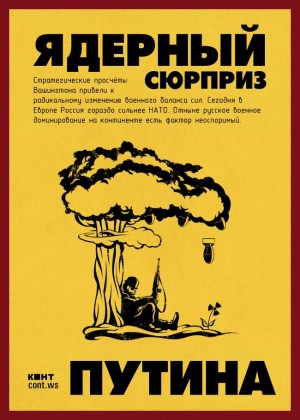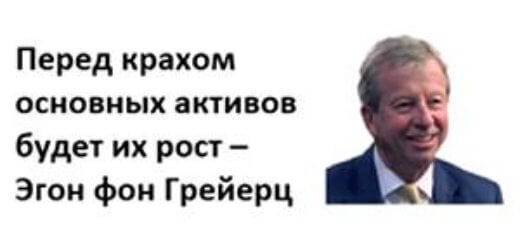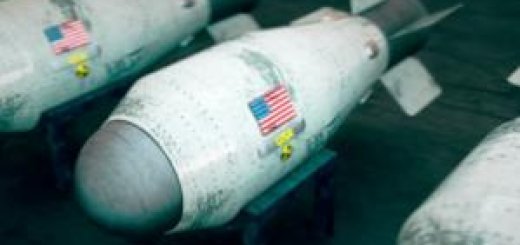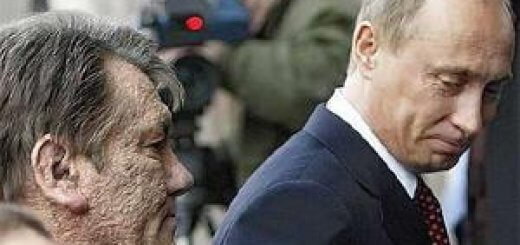
On September 1, 2014, the US State Department published a report stating that for the first time since the collapse of the USSR, Russia has achieved parity with Washington in the field of strategic nuclear weapons. Thus, Washington recognized that Moscow had regained the status that the Soviet Union had achieved by the mid-70s of the twentieth century at the cost of incredible efforts and which (it seemed – irrevocably) it was lost by us after the collapse of the Union. As follows from the State Department report, at the moment Russia has 528 carriers of strategic nuclear weapons, on which 1,643 warheads are deployed, and the United States has 794 carriers and 1,652 nuclear warheads. It turns out that Russia’s strategic nuclear forces (SNF) today are even more high-tech than those of the United States, since they provide the final parity in warheads with a significantly smaller number of carriers of strategic nuclear weapons. And in light of the well-known statements by representatives of the Russian leadership that by 2020, Russia’s strategic nuclear forces will be fully, one hundred percent, re-equipped with new-generation missiles, this gap between Moscow and Washington will only increase.
THE ATOMIC PROJECT. MANAGEMENT LESSONS
Such a breakthrough became possible thanks to the Nuclear Arms Limitation Treaty, also known as START-3, signed by Dmitry Medvedev and Barack Obama on April 8, 2010 in Prague (entered into force on February 5, 2011), according to which by 2021 it is planned to reduce the nuclear warheads of the parties to 1,550 units, and carriers (intercontinental ballistic missiles, ballistic missiles of submarines and heavy bombers) – up to 700 units. This was the first agreement in the strategic field, after the treacherous policy of the “perestroika” and the Democrats, in which Russia managed to achieve significant advantages for itself. In it, for the first time, the Americans pledged to REDUCE their strategic potential, while Russia was given the opportunity to increase it. In addition, within its framework, the most important restrictions that existed in the previous START-1 and 2 treaties were lifted from Russia: on the size of the deployment areas of mobile ICBMs, on the number of multi-charged ICBMs, on the possibility of creating railway ICBMs. Russia has not made any concessions. Having written off Moscow as a serious geopolitical competitor and believing in the myth of its unattainable military and technological superiority, Washington has driven itself into such a trap, the way out of which – at least in the near and medium term – is not even visible. And it’s not just about strategic nuclear forces. Recently, there has been a lot of talk about the so-called “sixth generation wars” and high-precision long-range weapons, which are designed to ensure victory over the enemy without coming into direct contact with its armed forces. But apart from the fact that this concept itself is very doubtful (neither in Iraq nor in Afghanistan could the United States retain the victory achieved in this way), Russia is also reaching a parity line here. The proof of this is the new generation of long–range cruise missiles, which will soon be deployed on submarines of the Black Sea Fleet and missile ships of the Caspian Flotilla.
In Russia today, many people find it hard to believe
Such distrust is especially widespread in the circles of the so-called “patriotic public” due to the fact that our public opinion is firmly and selflessly held captive by numerous myths about Russia’s total “weakness” and total Western “superiority”. These myths were formed back in the “dashing 90s” under the influence of Yeltsin’s betrayal of our national interests and the brutal Russophobia of the then-dominant liberal-democratic “masters” of Russia. It must be admitted that in those days they fully corresponded to the sad reality. But times have changed. And this can be easily understood if you do not try to replace a sober analysis with slogans and chants, and facts with fictions and fantasies.
THE PHENOMENON OF RUSSIAN POWER
Russian tanks in Europe
Consider, for example, the potential of conventional weapons of Russia and the West in the European theater of operations (Theater of Operations). In this area, as it is considered in a “decent patriotic society”, NATO is almost an order of magnitude superior to “weak” Russia. But the first encounter with reality leaves no stone unturned from such a delusion. As you know, the main striking force and the core of the combat power of the Ground Forces are tanks. By the time of the collapse of the USSR, our Armed Forces had about 20,000 tanks in their composition on the European Theater of Operations. The Americans, in turn, deployed a group of 6,000 heavy Abrams tanks on the territory of the Allies. But, despite this, the combined potential of NATO in Europe was still significantly inferior to the Soviet one. And NATO strategists were forced to compensate for this imbalance with the help of tactical nuclear weapons (TNW). Back in the first half of the 1950s, NATO conducted a study on what forces the bloc needed to have in order to reliably repel a large-scale land offensive by the superior forces of the Soviet Union and the Warsaw Pact countries. Then the calculations showed that to solve this problem it is necessary to have at least 96 full-blooded divisions. Meanwhile, the cost of arming one such division alone exceeded $1 billion. (and this is not in current dollars, but in the prices of that time!). Plus, about 2-3 times more funds were required for the maintenance of such a huge group of troops and the creation of appropriate infrastructure. Such a burden was clearly beyond the power of the Western economy. The solution was found in deploying a grouping of American tactical nuclear weapons on the continent, which was soon done. By the beginning of the 1970s, the American arsenal of TNW, according to experts, already numbered about 7 thousand ammunition for various purposes, and the highest achievement in this field was considered to be the creation of selective action weapons – neutron charges (for 203 mm and 155 mm guns, as well as for Lance missiles) with a capacity of 1 to 10 kilotons, which were considered as the main means of combating the personnel of the ground forces, especially the crews of Soviet tanks. Taking into account the nuclear factor, in order to repel the “Soviet aggression”, NATO needed to deploy not 96, but only 30 divisions, and they were deployed. How are things in this area now? And here’s how: at the beginning of 2013, the last batch of heavy Abrams was withdrawn by the Americans from Europe. In the NATO countries, over the past 20 years, 10-15 “old”, but in fact – quite combat-ready vehicles were scrapped for one new tank that entered service. At the same time, Russia has hardly reduced its tanks. As a result, today OUR COUNTRY IS THE ABSOLUTE LEADER HERE: in mid-2014, there were as many as 18,177 tanks on the balance sheet of the Ministry of Defense (T–90 – 400 units, T–72B – 7144 units, T–80 – 4744 units, T–64 – 4000 units, T-62 – 689 units and T-55 – 1200 units). Of course, only a few thousand vehicles are deployed in the units of constant readiness, and most of them are located in storage bases, but the picture is exactly the same for NATO members. So the decisive superiority of Russian tanks has not gone anywhere since the Soviet era, strange as it may seem, “patriotic” mourners and all-sufferers will hear it! Okay, the corrosive reader will say. But some of these tanks should be kept in the Far East, because China has its own 8,000 armored vehicles. In addition, NATO, as before, can compensate for this imbalance with the help of tactical nuclear weapons. So, even more reliable and cheaper… And here another surprise awaits us. In the field of TNW, the superiority of modern Russia over NATO is absolutely crushing!
Washington’s Fatal Miscalculation
And the Americans are well aware of this. Russian just used to think that Russia would never rise again, that the possibility of a big war in Europe was reduced to zero and the Russian TNW, along with Russian tanks, would eventually crumble from old age and uselessness. And now… now they’ve woken up, but it’s too late – the train has left! Here it must be said that this nuclear weapon can be called “tactical” very conditionally. Sometimes it significantly exceeds the power of warheads mounted on strategic ICBMs. I will point out for example that the range of safe firing of Russian 65-76K torpedoes in the nuclear version is eleven and a half kilometers, otherwise you can get under the blast wave of your own torpedo. And this despite the fact that the range of these torpedoes does not exceed 50 km. And, for example, the tactical bombs of the USA (B-61, 170 kt) and Russia (up to 350 kt) significantly exceed the warheads of the strategic American ICBMs Minuteman-2 (170 kt) and the Poseidon SLBM (40 kt) in their power. It would be useful to recall here that only two atomic bombs with a capacity of 15 kt (tactical, according to the current classification), dropped on Hiroshima and Nagasaki in 1945, brought Japan out of the war three weeks later… So, NATO countries currently have only 260 tactical nuclear munitions in the European Theater of Operations. The United States has 200 aerial bombs with a total capacity of 18 megatons. They are stationed at six air bases in Germany, Italy, Belgium, the Netherlands and Turkey. France has another 60 atomic bombs. That’s it! And Russia today, according to the most conservative estimates, has no less than five thousand units of TNW of different classes – from warheads for Iskanders to torpedo, aviation and artillery missiles! True, the United States has 300 more tactical B-61 bombs on its own territory, but with such an imbalance, this, you know, does not change things. And the United States cannot change this imbalance: they have destroyed the rest of the “legacy of the Cold War” — tactical nuclear shells, land–based missiles, and nuclear warheads of Tomahawk sea-based cruise missiles.And the Americans are well aware of this. Russian just used to think that Russia would never rise again, that the possibility of a big war in Europe was reduced to zero and the Russian TNW, along with Russian tanks, would eventually crumble from old age and uselessness. And now… now they’ve woken up, but it’s too late – the train has left! Here it must be said that this nuclear weapon can be called “tactical” very conditionally. Sometimes it significantly exceeds the power of warheads mounted on strategic ICBMs. I will point out for example that the range of safe firing of Russian 65-76K torpedoes in the nuclear version is eleven and a half kilometers, otherwise you can get under the blast wave of your own torpedo. And this despite the fact that the range of these torpedoes does not exceed 50 km. And, for example, the tactical bombs of the USA (B-61, 170 kt) and Russia (up to 350 kt) significantly exceed the warheads of the strategic American ICBMs Minuteman-2 (170 kt) and the Poseidon SLBM (40 kt) in their power. It would be useful to recall here that only two atomic bombs with a capacity of 15 kt (tactical, according to the current classification), dropped on Hiroshima and Nagasaki in 1945, brought Japan out of the war three weeks later… So, NATO countries currently have only 260 tactical nuclear munitions in the European Theater of Operations. The United States has 200 aerial bombs with a total capacity of 18 megatons. They are stationed at six air bases in Germany, Italy, Belgium, the Netherlands and Turkey. France has another 60 atomic bombs. That’s it! And Russia today, according to the most conservative estimates, has no less than five thousand units of TNW of different classes – from warheads for Iskanders to torpedo, aviation and artillery missiles! True, the United States has 300 more tactical B-61 bombs on its own territory, but with such an imbalance, this, you know, does not change things. And the United States cannot change this imbalance: they have destroyed the rest of the “legacy of the Cold War” — tactical nuclear shells, land–based missiles, and nuclear warheads of Tomahawk sea-based cruise missiles. In order to understand how it happened that Russia, which “lost” the Cold War, is now an ORDER of MAGNITUDE superior to NATO in this important area, it is necessary to turn to the history of the issue. It is believed that by the beginning of 1991, the USSR had approximately 20-22 000 units of tactical nuclear weapons. These are nuclear charges of aerial bombs, warheads of tactical missiles “Luna”, “Tochka”, “Oka”, nuclear warheads of anti-submarine and anti-ship weapons of the fleet, special warheads of air defense and missile defense missiles, nuclear mines and nuclear artillery shells of the Ground Forces. This impressive arsenal was the result of a forty-year intense arms race, initiated, by the way, not by the “totalitarian” USSR, but by the quite democratic and liberal USA, which already in the early 1950s began to develop and test various types of TNW. The first example of a warhead of this class was a projectile for a 280-mm cannon, with a capacity of 15 kt, tested in May 1953. With the miniaturization of nuclear warheads, projectiles for self-propelled howitzers of 203 mm and 155 mm caliber were subsequently adopted, which had a power of 1 to 10 kt and until recently were in the arsenal of American troops in Europe. Subsequently, tactical missiles with nuclear warheads were put into service: “Redstone” (range 370 kilometers), “Corporal” (125 kilometers), “Sergeant” (140 kilometers), “Lance” (130 kilometers) and a number of others. In the mid-1960s, the development of the Pershing-1 tactical missile (740 kilometers) was completed. In turn, the Soviet military-political leadership decided that the saturation of American troops in Europe with TNW creates a fundamentally new balance of forces on the continent. Decisive measures were taken to create and deploy numerous types of Soviet TNW. Already in the early 1960s, tactical missiles T-5, T-7, and Luna began to arrive in the troops. Later, the non-strategic nuclear arsenal included medium-range missiles RSD-10, R-12, R-14, medium-range bombers Tu-22, Tu-16, tactical missiles OTR–22, OTR-23, tactical – R-17, “Dot”, 152 mm caliber nuclear artillery, 203 mm and 240 mm, tactical aircraft Su-17, Su-24, MiG-21, MiG-23, sea-based vehicles. By the way, the Soviet leadership has repeatedly offered Western leaders to start negotiations on reducing tactical nuclear weapons. But NATO for a long time stubbornly rejected all the proposals of the USSR on this topic. The situation changed radically only when the Union staggered under the blows of Gorbachev’s “perestroika”. Then Washington felt that it was necessary to use the moment to weaken and disarm its main geopolitical opponent as much as possible. In September 1991, US President George W. Bush took the initiative to reduce and even eliminate certain types of TNW. Gorbachev, in turn, also announced plans for a radical reduction of similar weapons in the USSR. Subsequently, these plans were developed in the statement of Russian President Boris Yeltsin “On Russia’s policy in the field of arms limitation and reduction” of January 29, 1992. It indicated that the production of nuclear artillery shells and warheads for ground-based missiles had been discontinued in Russia, and all stocks of such warheads would be destroyed. Russia will remove all TNW from surface ships and multipurpose submarines and eliminate one third. Half of the warheads for anti-aircraft missiles and aviation ammunition will also be eliminated. After these reductions, Russia and the United States were supposed to have 2500-3000 tactical nuclear warheads in the arsenals of TNW. But it turned out differently. The illusion of world hegemony played a cruel joke on Washington. “Democratic” Russia, after the terrible pogrom that their liberal agents staged here, was written off by American strategists. At the same time, after their high–precision weapons successfully coped with some combat tasks previously planned for TNW during the Gulf War, Washington bet on a technological breakthrough. But this led to the fact that “smart” weapons became more and more expensive, less and less of them were produced, and in the end, NATO’s “high-precision ammunition” turned out to be completely insufficient for conducting large-scale hostilities with an enemy at least approximately equal to the West in terms of its technological level.
“Borjom” for decomposed kidneys
Meanwhile, in Russia, experts quickly agreed that in the geostrategic situation that has developed since the collapse of the USSR, a landslide reduction and destruction of TNW is unacceptable. After all, it is TNW, which has quite high indicators according to the criterion of “efficiency-cost”, can serve as a kind of universal equalizer of forces, depriving NATO of their military advantage. Under the circumstances, Russia simply borrowed from NATO the thesis that was recently used by the alliance about the need to compensate for enemy superiority in conventional weapons by deploying a tactical nuclear arsenal on the European Theater of Operations.
This is how the situation has been developing for two decades
The West, having written off Russia, cut its tanks, destroyed tactical nuclear ammunition. Russia, feeling its weakness, left both tanks and tactical nuclear ammunition as an “armored train on a siding.” This is what has led to the fact that now – after Russia has overcome the inertia of disintegration and has begun a systematic revival of its power, and the West, lulled by sweet dreams of a liberal “end of history”, has castrated its armed forces to the point where they are capable of waging only colonial wars with a weak, technically backward enemy – The balance of power in Europe has radically changed in our favor. Realizing this, the Americans caught on, but it was too late. In December 2010, the Assistant Secretary of State for Verification, Compliance and Implementation of Agreements, Rose Gottemoeller, sounded the alarm: “The Russians have more tactical nuclear systems than we do, and Congress strongly recommends that these issues be addressed… The next step should be the reduction of tactical nuclear weapons.” Even more active in the same year were the Europeans in the person of the foreign ministers of Poland and Sweden, who blindly demanded from Russia the unilateral creation of two nuclear–free zones – the Kaliningrad Region and the Kola Peninsula – territories of priority deployment of the Russian TNW, including the main areas of the Baltic and Northern Fleets (in the case of the Northern Fleet, this is also the area where a significant part of the Russian Strategic Nuclear Forces are based). Since then, the Americans have repeatedly offered our country a flawed way to solve the “TNW problem”, stubbornly insisting on developing an agreement “to eliminate inequality in tactical nuclear weapons stocks.” They even tried to condition the entry into force of the OSV-3 treaty on the start of negotiations on TNW. Thus, in accordance with Senator Sene Lemieux’s amendment (Amendment 4/S.AMDN.4908), the final entry into force of the OSV-3 should take place only after the consent of the Russian side to negotiations on the issue of the so-called “elimination of the imbalance” in the tactical nuclear weapons of Russia and the United States. And already on February 3, 2011, Barack Obama, in a letter sent to a number of key senators, announced “the beginning of negotiations with Russia in the near future on eliminating the disparity between tactical nuclear weapons of the Russian Federation and the United States and reducing the number of tactical nuclear warheads in a verifiable way.” But alas! In 2012, Putin returned to the Kremlin and the West’s hopes of “diluting” Russia by inclining it to unilateral disarmament failed.
***
The price of this failure became more or less clear during the Ukrainian crisis. And this price is as follows: the West has lost its former military superiority over Russia, and in the European theater of operations it turned out to be MANY TIMES WEAKER than Moscow. And there are no ways to correct this disparity, neither Washington, nor London, nor Berlin, nor Paris.




















